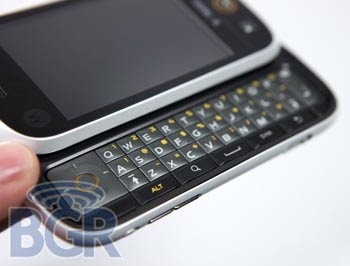
The creator of a popular souped-up version of Android thinks he's found a way to avoid a further tussle with Google over distribution of the company's mobile applications.
Google recently sent a cease-and-desist letter to Android guru Steve Kondik asking him to stop distributing applications such as Gmail with Cyanogen, his modified version of the open-source Android operating system. Cyanogen adds a load of enhancements such as an MMS (Multimedia Messaging Service) shortcut and support for the FLAC audio format.
People are allowed to modify and redistribute the Android operating system because it is open source software, but Google's mobile applications are not. They're available through the Android Market online apps store, and are preinstalled on some Android devices under the name Google Experience. But by bundling the applications with his modified software, Kondik violated Google's copyrights, the company said.
"We make some of these apps available to users of any Android-powered device via Android Market, and others are pre-installed on some phones through business deals," wrote Dan Morrill on the Android developer blog.. "Either way, these apps aren't open source, and that's why they aren't included in the Android source code repository. Unauthorized distribution of this software harms us just like it would any other business, even if it's done with the best of intentions."
Kondik has backed down but thinks there is a workaround that may allow users of his software to continue to access Google's applications such as Maps, GTalk, Android Market and YouTube, while keeping Google's lawyers at bay. Installing Cyanogen means reflashing the phone, a process which erases the original software before reinstalling the modified version of Android.
He now intends to release a "bare bones" version of Cyanogen without the applications, leaving it to modders to make a backup copy of the Google applications that shipped with their phone for later reinstallation before hacking away at the Android software.
"The idea is that you'll be able to Google-ify your CyanogenMod installation with the applications and files that shipped on your device already," Kondik wrote. "I will include an alternative app store (SlideMe, or AndAppStore, not decided yet) with the basic ROM so that you can get your applications in case you don't have a Google Experience device."
Google did not have a comment on the plans.
The first Android phone was released about a year ago by T-Mobile, and up to two million of the phones may have been sold, according to analysts. Up to a dozen Android devices may be on the market by the end of the year. Cyanogen is one of the more popular versions of Android, with up to 30,000 active users, according to Kondik.



















































